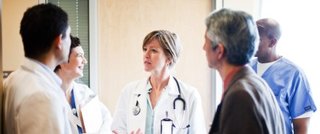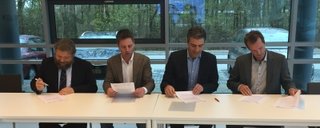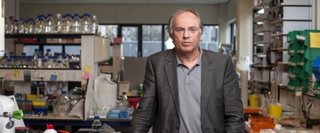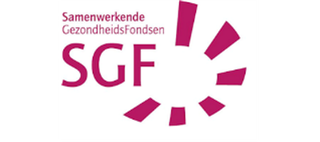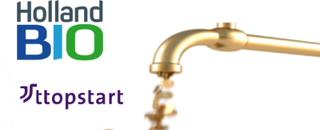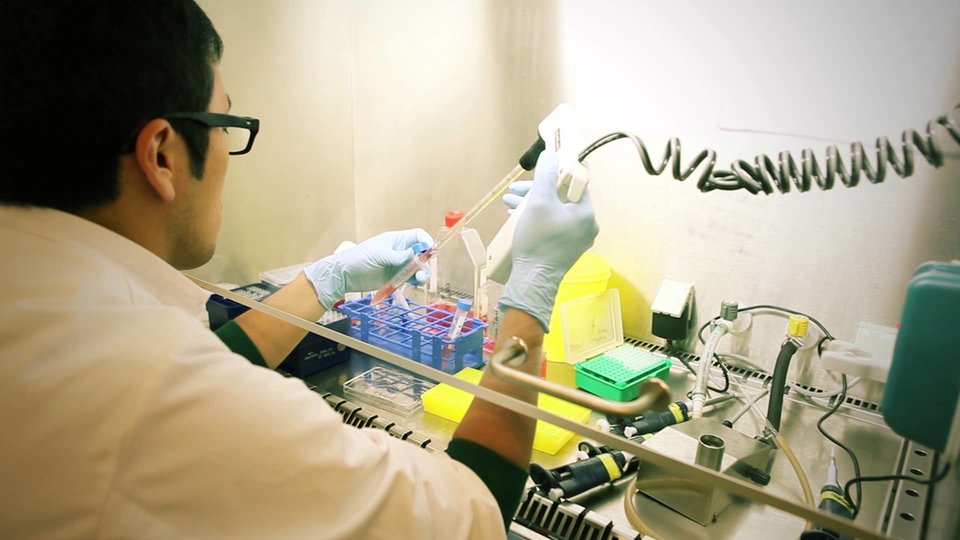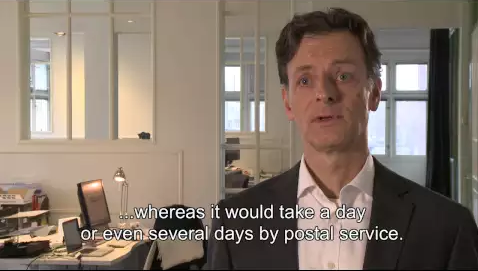RA affects many people. It is a chronic autoimmune disease characterised by the presence of auto-antibodies and inflammation leading to disability. Anti-citrullinated protein antibodies (ACPA) are highly RA specific and seem to have an increased size due to a larger sugar structure, known as glycan. So far, René Toes (professor in Experimental Rheumatology and head of the laboratory of LUMC’s Rheumatology Department) and his group found this large sugar structure in all 50 RA patients examined on 90% of the ACPA molecules. They wanted to characterise this sugar chain to gain a better understanding of this structure, which may be linked to onset of the disease and could therefore be used as a prognostic or diagnostic marker in early stages of RA. With the support of the ETH programme , Toes gained access to specific mass spectrometry technology to help identify these glycans. ZonMw partners with the Dutch Techcentre for Lifesciences (DTL), which provides up-to-date-information about the Technology Hotels on its website. Toes collaborated with the Technology Hotel “Center for Proteomics and Metabolomics” of prof. dr. Manfred Wuhrer at LUMC.
Get Inspired
Enabling Technologies Hotels programme helps LUMC with development of new technology for Rheumatoid Arthritis research
The ZonMw Enabling Technologies Hotels programme, a.o. supported by Top Sector LSH, connects researchers to service-oriented facilities with high-end technologies. Short-term public-private projects of maximum one year with a maximum budget of 30,000 euros can be applied for in the programme. One of the granted projects in the first round came from the Rheumatology Department at Leiden University Medical Center (LUMC). Here, prof. dr. René Toes and his team are exploring a unique technology that can analyse rheumatoid arthritis specific glycosylation sites of the anti-citrullinated protein antibodies (ACPA). With this technique, LUMC can study the biological function and activities of the glycosylation of ACPA, which may be linked to the onset of rheumatoid arthritis (RA). Ultimately, the results could lead to new prognostic or diagnostic markers in early stages of RA.
The collaboration with Wuhrer and his team offered not just the mass spectrometry technology, but also their acquired knowledge and expertise. The collaboration started with the research question of Toes in 2014 and is already paying off. The ETH project has resulted in the development of a unique methodology to analyse the sugar chains in ACPAs. The Belgian company UCB Pharma joined the project to help optimise the technology by producing specific glycosylated ACPAs.
Toes: “When I started working at the Rheumatology Department 17 years ago the waiting rooms in the hospital were large, with plenty of space between the chairs to allow for all patients in wheelchairs. Nowadays, the waiting rooms are much smaller since wheelchairs are not that common anymore.” This illustrates the considerable developments that have taken place within rheumatology during the past two decades. Looking ahead, Toes hopes to identify the autoimmune response at an early stage. This would present early intervention opportunities that could prevent the development of the destructive phase of RA, or maybe disease initiation completely.
“The ultimate aim is to stop the development of RA and eliminate the disease.”
The group of Toes is committed to contribute their bit to fight RA and have long-term support from the Dutch Arthritis Foundation (Reumafonds). The ETH project is just a small part of this fight. However, the research has continued in various ways. Recently, Toes was awarded a ZonMw TOP subsidy worth 675,000 euros. This will be used to realise a longer term collaboration with the Technology Hotel. A colleague in the department of Toes, Dr. Hans Ulrich Scherer, has also received a ‘Clinical Fellows’ grant worth 160,000 euros.
When Toes is asked to think of someone who could benefit from an ETH grant he replies: “Everyone.” And he continues: “The ETH programme gives access to technologies that we do not possess at our clinical department. Gaining access to various technologies helps to answer our research questions and accelerates our research.” And he has certainly spread the word in his own lab. In the second round of the programme three ETH projects were awarded to investigators from his group. This is making it possible to use high-end technologies in Leiden, Groningen, Nijmegen and Amsterdam ranging from RNA-sequencing, B cell receptor analyses to high-throughput analyses of the recognition pattern of (de)glycosylated ACPA molecules.
Overall, the ETH programme has demonstrated clear added value over the past few years. A total of 67 ETH projects has been awarded in the first two rounds. The results from the third round will be announced before the end of February 2016 and the ZonMw programme team estimates that at least 26 projects can be awarded within the available budget resulting in almost 100 ETH projects in these three rounds. The success rate for applicants in these rounds has been consistently around 40-50%.
The programme is executed by ZonMw in partnership with DTL and financed by ZonMw and NWO Earth & Life Sciences. Projects need to be carried out in Top Sectors Agri&Food, Horticulture and Starting Materials or Life Sciences & Health. The programme will be continued in 2016/2017 and the next call is planned to open at the end of 2016.
For more information about the programme please contact dr. ir. Sander Hougee, programme officer ETH.
For more information about DTL Technology Hotels and the listing of your hotel for future participation in the ETH programme, please contact Merlijn van Rijswijk, program manager DTL technologies.
- Read the publication of Prof. Dr. Toes and his group
- Visit Reumafonds
- Website of the research group of Prof. Dr. Toes
Photo credits: Jeroen Dietz & Reumafonds
Biotech Thursday: The Power of Publicity
24 September, The Hague
The exiting developments within the Life Sciences and Health sector appeal to a large audience. Emerging technologies and products are therefore attracting attention through various media and social media channels. The coverage stretches from the highly praising to doom scenarios. During this Biotech Thursday, we will discuss the power of publicity and how to deal with the media if you are active in the life sciences sector. Speakers include Wim Leereveld (funder and CEO of the Access to Medicine Index) and Hidde Boersma (freelance science journalist and ecomodernist). Biotech Thursday is an initiative of HollandBIO, the Dutch biotechnology industry organisation.
Interested in attending? This Biotech Thursday event will take place at the Humanity House in The Hague on 24 September at 15:00 hours. HollandBIO members can attend the event for free. The fee for non-members is 35 euros (taxes excluded). Contact HollandBIO for more information or register directly.
An excellent oncology institute
A new world-class institute, working title Onco XL, will bring the Netherlands' top oncology scientists together to support fundamental cancer research, drive scientific breakthroughs, and connect to translational and clinical research capacities. Onco XL will build a valorisation team of professionals completely dedicated to oncology to support the translation of research results into new economic activity, new jobs, and a range of innovative products, services and procedures for the prevention, diagnosis and treatment of cancer.
The Top Sector LSH has played a pivotal role in initiating this new and large collaboration among oncology scientists and it will create a platform for support. The initiative is led by Rene Kuijten and supported, for example, by Fred Dom, Clemens van Blitterswijk, Joep Pluymen and Jan Raaijmakers from the Top Sector, as well as Rudy Dekeyser, former director of the Flanders Institute for Biotechnology (VIB).
The oncology institute aims to be operational in 2016. Stay tuned to soon hear more on this large institute.
Join forces on regenerative medicine
Regenerative Medicine (RM) might be the answer to many healthcare questions centred around cure, care and prevention of diseases. Investing in RM also contributes to our economic perspective, since this new industry creates jobs and attracts talent and investments towards regional ecosystems. Altogether it is a promising branch of the Life Sciences & Health sector.
The future of RM lies in repair, replacement or regeneration of damaged cells, tissues and organs. It has a broad application from cardio vascular diseases through to orthopaedic injuries. RM will improve patients' quality of life and make healthcare more sustainable, because RM is less invasive, more preventive and replaces expensive therapies.
Top Sector Life Sciences & Health has started a transnational initiative on RM, which will bring RM- related care solutions to patients. Outstanding science will be matched with excellent valorisation. The first interest and commitments have been expressed by the regions Utrecht, Eindhoven, Maastricht and Leuven.
The RM initiative will be elaborated on in 2016. The latest updates will be communicated via Health~Holland.
Life Sciences Funding Database
This year HollandBIO and ttopstart launched the Life Sciences Funding Database
Finding suitable funding opportunities for life sciences research or biotech companies can be really difficult. The subsidy and fiscal landscape is complex and ever-changing. Therefore, HollandBIO and ttopstart developed the Life Sciences Funding Database, aiming to show entrepreneurs and academia the ropes in identifying funding opportunities.
The database is easy-to-use: just enter a selection of keywords and an up-to-date overview of funding opportunities will be presented. Subsidies, grants, attractive fiscal arrangements: the database includes all relevant national and European funding instruments. Visit www.hollandbio.nl/funding to see which opportunities are waiting.
Top Sector LSH recommends this Funding Database tool to anyone looking for suitable financial arrangements. Informing the Dutch Life Sciences & Health sector on funding is one of the tasks of the Top Sector. Therefore a clear and sorted information database contributes to the sector.
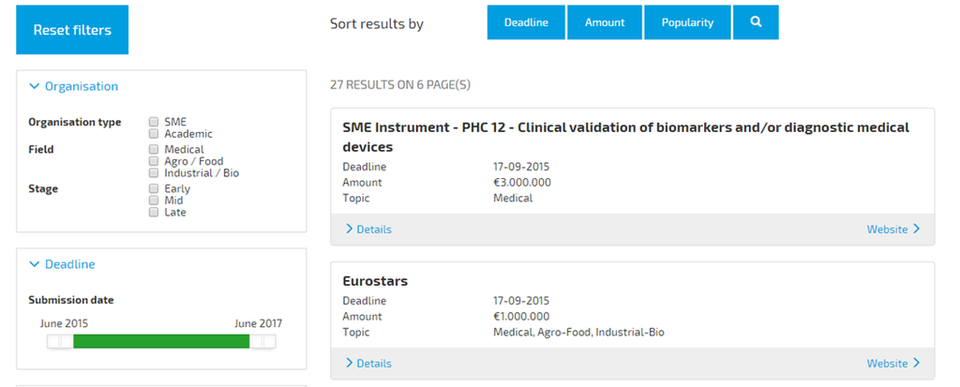
Hubrecht Institute partners up with Top Sector Life Sciences & Health
Wouter de Laat and Eva van Rooij, group leaders at the Hubrecht Institute, enter a public-private partnership with the Top Sector Life Sciences & Health (LSH). "This strengthens basic research”, says Alexander van Oudenaarden, Director of the Hubrecht Institute.
"Basic research forms the basis for developments within the Life Sciences and Health sector" according to prof. Jan Raaijmakers, chairman of the Top Sector Life Sciences & Health. "The Top Sector LSH is excited to collaborate with high quality institutes, like the Hubrecht Institute, which clearly distinguishes itself on a global scale in the field developmental and stem cell biology."
Top sector LSH includes a wide range of disciplines, from pharmaceuticals to medical technology, from infrastructure within healthcare to vaccinations. To realize the mission of the Top Sector - vital functioning citizens in a healthy economy - the Top Sector builds on the innovative strengths of the Dutch Life Sciences & Health sector. This way the sector is able to address the major societal challenge in prevention, cure and care: improving functioning and vitality, while the costs of health care can be decreased.
Professor Alexander van Oudenaarden: "It is nice to see how already existing partnerships between the Hubrecht Institute and the industry are now also supported by the top sectors. This not only makes it possible to accelerate the process from scientific discovery to product, but also strengthens basic research, which is crucial for future innovation."
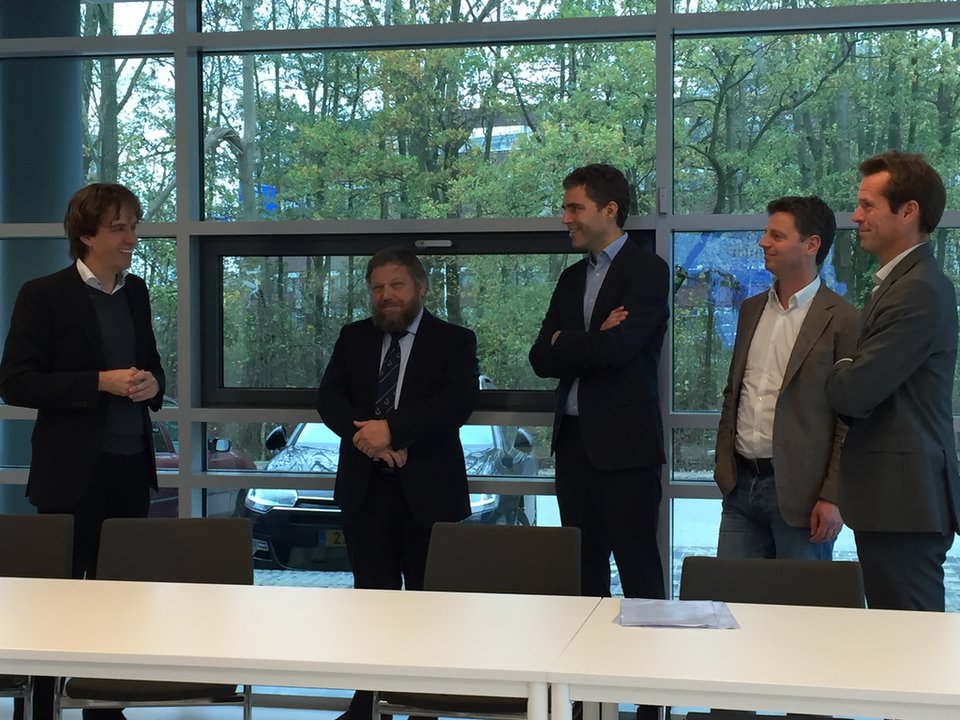
Update on Hans Clevers’ groundbreaking stem cell research
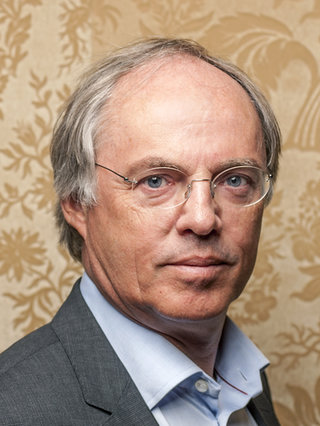
Together with three other groundbreaking researchers, Hans Clevers was appointed as one of the National Icons by the Dutch Parliament in November 2014. Top Sector LSH is extremely proud of the National Icons and wanted to know: What are the recent developments in the research of Clevers and how does the title of National Icon help him? Read more about his groundbreaking stem cell research and the latest progress.
The potential op organoids
Hans Clevers’ research group has developed a unique method at the Hubrecht Institute that makes it possible to culture human stem cells and grow these into ‘mini-organs’, or so called organoids. The Hubrecht Institute is the first to grow endless amounts of healthy cells or tissue from a small number of stem cells. This offers numerous possibilities. In the long run it will be possible to grow healthy stem cells into healthy organs for organ transplantation. In the short term, tissues from patients can be used to test series of medicines. This will allow patients to receive a personalised treatment that works best for them. These organoids could also replace animal testing in research projects.
Personalised medicine and living biobanks
In the field of personalised medicine, Clevers has already shown significant effects in cystic fibrosis (CF) patients. There are currently 1530 CF patients in the Netherlands of whom 650 are children*. Each year 50 new CF patients are diagnosed. Together with the Wilhemina Children's hospital (Prof. Kors van der Ent and Dr. Jeffrey Beekman) and national lung specialists the Hubrecht Institute is able to test different types of medicine on tissues from CF patients outside their body. This personalised testing helps to identify the best medicine. ‘Testing different medicines costs a couple thousand euros, whereas the medicine might cost 250,000 euros per patient per year. Insurance companies can benefit from these personalised tests as then they know in advance which medicine suits the patient best,’ says Clevers.
“We are forming a consortium which will screen all CF patients in the Netherlands, collect samples from all their tissues and realise one central living biobank.”
Together with the KNAW and University Medical Center Utrecht the Hubrecht Institute founded the non-for-profit organisation Hubrecht Organoid Technology (The HUB). The HUB builds on this living biobanks of organoids and develops assays for drug screening and validation. Not only for CF patients, but also for cancer patients. Due to the diversity and complexity of cancer it will take longer to realise a comparable cancer biobank. However, more than 20 pharmaceutical companies are already affiliated, which brings the HUB a step closer to their national goal.
National Icon
In addition to his research and clinical work for the HUB, Clevers has published articles in Cell, Science and Nature. His National Icon title helped Clevers’ research to become even more visible. “Conversations with health insurances and hospitals were made easier,” Clevers confirms.
And Clevers continues
Just recently Clevers became scientific director of the Princess Máxima Center for pediatric oncology. In this center healthcare, research, education and training are combined to improve survival rates and the quality of life for children with cancer. The care is focused on the patients and their families, and particularly on the patient's development. Eighty children have their own room next to a room for their family. At the center, patient-related research is carried out, where the research and the researchers literally join patients at their bedside. The research center will provide around 400 research jobs. Curious what the building and the in-house research center will look like in 2017? Please visit the website of the Princess Máxima Center.
Photo credits: Sander Heezen
Attractive Funding Opportunities for LSH industry
There are many programmes that support entrepreneurs in Life Sciences & Health. Since Access to Funding is on of Top Sector LSH priorities some examples are illustrated here, run by the Netherlands Enterprise Agency.
MIT arrangement
PortaVita and Helpline explain how the MIT arrangement helped their enterprise.
Eurostars
Eurostars supports development of a new drug for triple negative breast cancer. The project will be developed by a consortium of six pharmaceutical companies including the Dutch company Hercules.
DCPrime was awarded a European Eurostars program grant to extend DCPrime’s therapeutic cancer vaccine program for application in solid cancers.
The next submit deadlines for the Eurostars programme are 18 february and 15 september 2016.
Innovation Credit
With the innovation credit the Ministry of Economic Affairs gives SMEs financial support for risky innovation projects. In this way the Government fills the gap in the capital market in a phase where entrepreneurs are busy to get things going, but do not yet generate returns.
Horizon 2020
Through Horizon 2020, the European Commission (EC) and the ministry of Economic Affairs aim at increasing Europe's competitive position by strengthening scientific knowledge and by stimulating innovation. In addition, the EC wants to challenge business and academia to collaborate in creating solutions for pan-European societal challenges, such as climate change, ageing population, food safety & security and affordable renewable energy.
Get an overview of all subsidies and programmes via the Dutch Enterprise Agency.
Be inspired by all the LSH projects that are supported by the Dutch Enterprise Agency in their database: Volginnovatie.nl
Cooperation between health foundations and Top Sector LSH
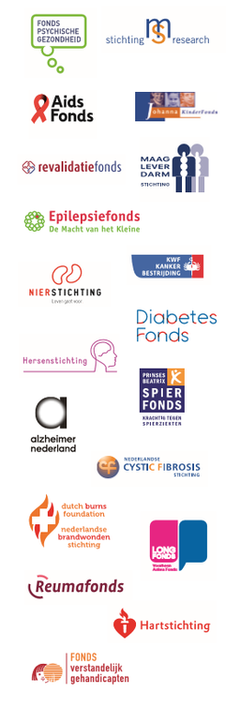
Cooperating with the health foundations was a key activity of Top Sector LSH last year. With effect from 2015, the Ministry of Economic Affairs changed the TKI allowance regulations to allow Health Foundations to participate in the scheme.
Health foundations, like the Cancer Foundation, Kidney Foundation and Heart Foundation, have reported on their investments in innovative research programmes. And for every euro they spend they receive between 20% to 25% for new R&D activities via the TKI allowance. The scheme is open to all health funds, irrespective of their size.
During the Top Sector Life Sciences & Health advisory board meeting of December 2015, several of the health foundations presented their plans and ambitions for the future. Funds are collaborating in joint programmes where they can consolidate their strengths and realise advanced research with increased synergy.
Meanwhile, the Health~Holland office is preparing many applications, calls and initiatives for new project proposals by the health foundations. In the first year (2016) approximately 15 million euros in TKI allowances will be available for the foundations.
Developments around the new project proposals will be communicated via Health~Holland communication channels.
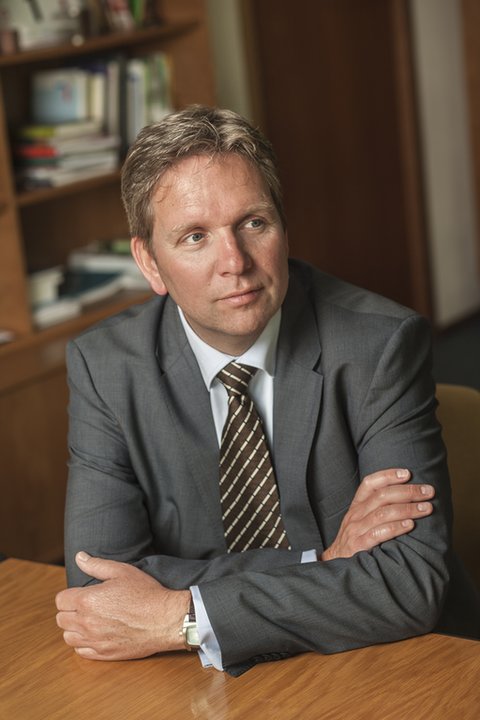
Tom Oostrom (Director Dutch Kidney Foundation), member of the Advisory Board: “We believe in the partnerschip between health foundations and Tops Sector LSH to make the difference for patients.”
